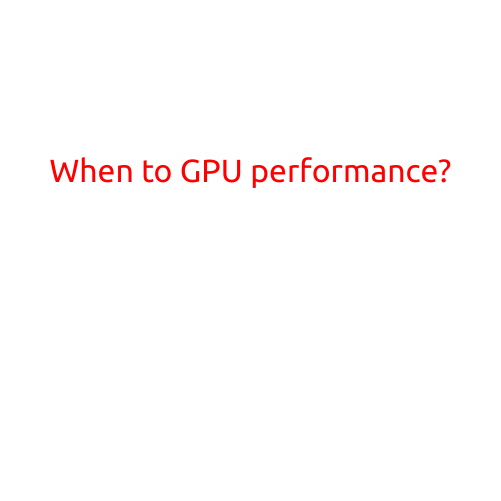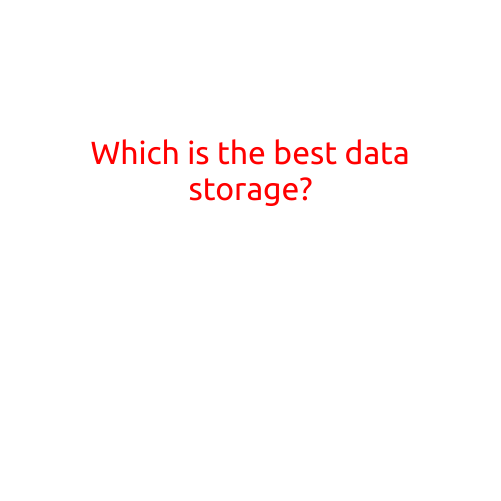
When to GPU Performance?
The Graphics Processing Unit (GPU) has become an essential component in modern computing, playing a crucial role in rendering 2D and 3D graphics, video games, and even general computing tasks. However, not all applications benefit equally from GPU performance. In this article, we’ll explore when to expect a significant boost in performance from your GPU.
Graphics-Intensive Applications
The most obvious scenario where a GPU shines is in graphics-intensive applications. These include:
- Gaming: Modern games rely heavily on the GPU to render high-definition graphics, fast frame rates, and complex physics simulations. A powerful GPU can make a significant difference in terms of performance, visual quality, and overall gaming experience.
- Computer-Aided Design (CAD): Programs like Autodesk AutoCAD, SolidWorks, and Blender utilize the GPU to accelerate 3D modeling, rendering, and simulation tasks. A faster GPU can reduce rendering times and improve overall productivity.
- Video Editing and Rendering: Video editing software like Adobe Premiere Pro, Final Cut Pro, and Blackmagic Design DaVinci Resolve rely on the GPU for fast video rendering, color grading, and effects processing.
- Scientific Simulations: GPUs are used in various scientific fields, such as climate modeling, molecular dynamics, and fluid dynamics, to accelerate complex simulations and reduce computational times.
General Computing Applications
While the previous scenarios highlight the GPU’s strengths in graphics-intensive applications, it’s not the only area where a GPU can make a significant impact. In general computing, a powerful GPU can:
- Accelerate Data Processing: Many data-intensive tasks, such as data compression, encryption, and machine learning algorithms, can be offloaded to the GPU, freeing up the CPU for other tasks.
- Enhance System Responsiveness: With a faster GPU, your system can respond faster to tasks, reduce lag, and provide a smoother user experience.
- Improve Virtual Machine Performance: GPUs can accelerate virtual machine (VM) performance by offloading CPU-intensive tasks, such as graphics rendering and compression.
Real-World Scenarios
To illustrate the benefits of a GPU, consider the following real-world scenarios:
- Video Transcoding: Converting a 4K video to H.264 format using HandBrake on a mid-range GPU can take around 30 minutes, whereas on a high-end GPU, the same task takes around 10-15 minutes.
- Gaming: In a game like Assassin’s Creed Odyssey, a high-end GPU can deliver frame rates of 60-80 FPS at 4K resolution, while a mid-range GPU may struggle to maintain 30-40 FPS.
- Data Compression: Using GPU-accelerated data compression tools like GPU-accelerated Blosc, data compression tasks can be up to 10x faster than CPU-only compression.
Conclusion
In conclusion, a GPU’s performance is crucial in applications that rely heavily on graphics processing, such as gaming, computer-aided design, video editing, and scientific simulations. While general computing applications may not require a high-end GPU, a mid-range or high-end GPU can still provide significant performance boosts in tasks like data processing, system responsiveness, and virtual machine performance.





